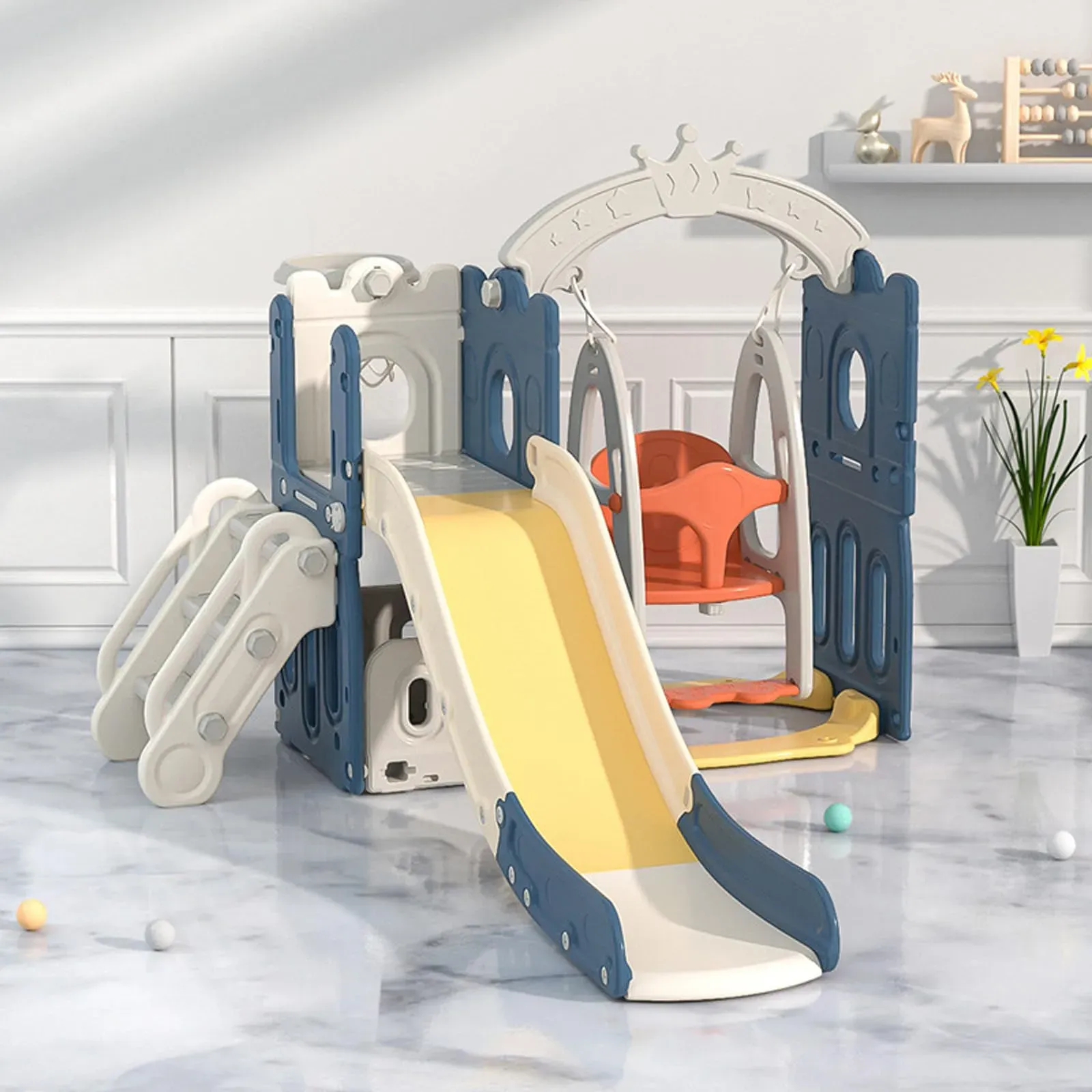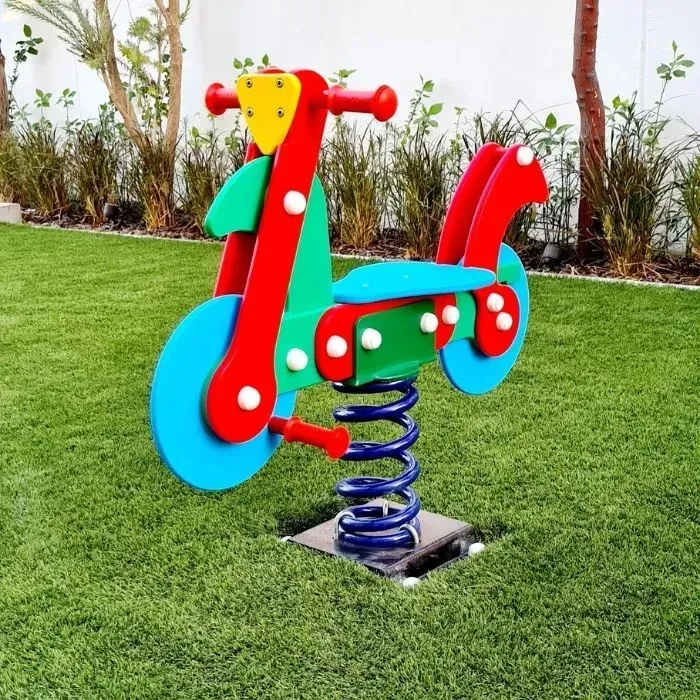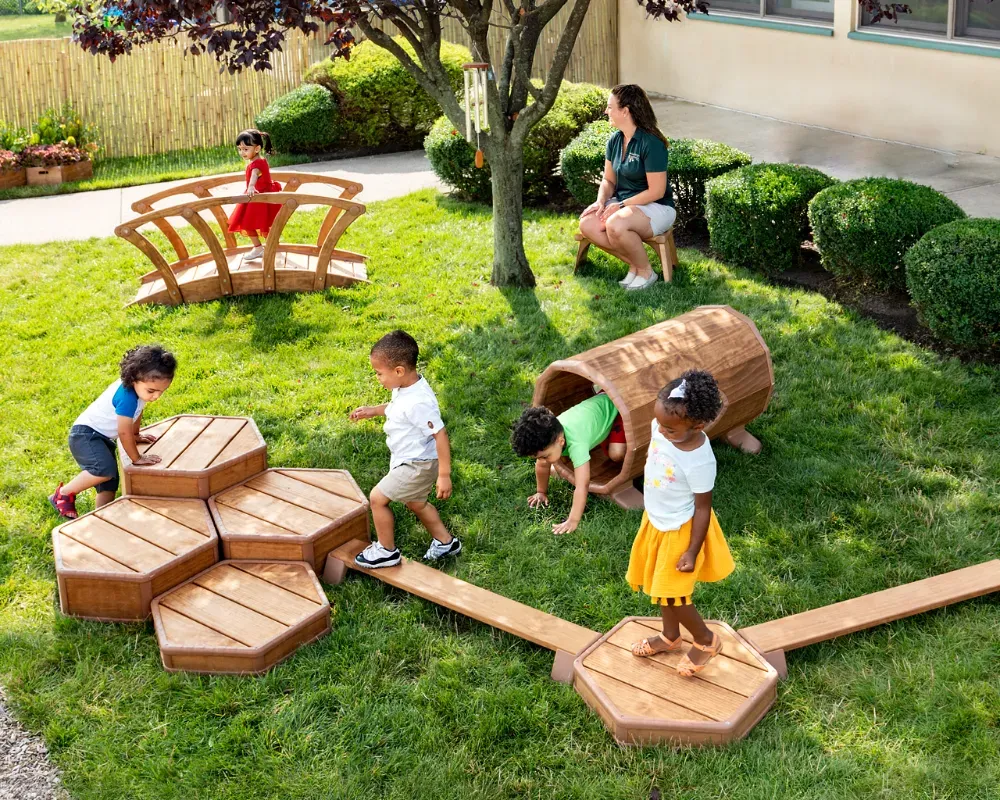Table of Contents
Let's be honest, keeping a toddler entertained feels like a competitive sport sometimes. They're bundles of energy, curiosity, and a surprising lack of self-preservation. While screens might offer a temporary truce, getting them outside? That's where the real magic happens for their development. But navigating the world of slides, swings, and sandboxes can feel overwhelming. What's actually worth the money? What won't fall apart after a week or, worse, cause a trip to the ER? Choosing the right outdoor play equipment for toddlers isn't just about buying colorful plastic; it's about investing in their physical skills, their imagination, and frankly, your sanity. This article cuts through the noise. We'll look at why getting them outdoors is crucial, what gear makes sense for their age and your space, how to keep things safe without hovering like a helicopter, and how to turn simple equipment into endless adventures. Forget the marketing fluff; let's talk about what works in the real world.
Why Outdoor Play Matters for Your Toddler

Why Outdoor Play Matters for Your Toddler
Look, it's easy to let screen time creep in, especially when you're trying to make dinner or just get a moment's peace. But honestly, nothing beats the sheer, unadulterated chaos and developmental boost your little one gets from being outside. We're talking about more than just burning off energy (though let's be real, that's a huge perk). Getting outdoors helps them build those crucial gross motor skills – the running, jumping, climbing that strengthens muscles and coordination. It's a sensory explosion: the feel of grass, the smell of dirt after rain, the sound of birds. This isn't just nice-to-have; it's fundamental for brain development, problem-solving, and even regulating emotions. Think about it – navigating uneven ground, figuring out how to get down a small slide, or just feeling the wind on their face. These experiences are building blocks for their physical and cognitive future. That's precisely Why Outdoor Play Matters for Your Toddler.
- Boosts Gross Motor Skills (running, climbing, balancing)
- Enhances Sensory Development (touch, sight, sound, smell)
- Improves Coordination and Balance
- Encourages Problem-Solving and Risk Assessment (within safe limits!)
- Supports Emotional Regulation (fresh air works wonders)
- Sparks Imagination and Creativity
Choosing the Right Outdoor Play Equipment for Toddlers

Choosing the Right Outdoor Play Equipment for Toddlers
Size Up Your Space and Wallet
Alright, before you get lost in the shiny, colorful world of playground gear, take a hard look at your backyard. Is it a sprawling estate or more of a postage stamp? This dictates everything. Don't buy a massive swing set if it's going to take up the entire usable area, leaving no room for actual running around. Measure twice, buy once. Also, let's talk budget. Outdoor play equipment for toddlers can range from a ten-dollar plastic ball to a thousand-dollar climbing structure. Figure out what you can realistically spend. Remember, sometimes a few well-chosen, smaller pieces are way better than one giant, underutilized monstrosity. You can always add more later as they grow and your budget allows.
Age-Appropriate Fun is Key
Putting a one-year-old on a swing designed for a five-year-old is just asking for trouble. Toddlers have specific needs and abilities, and the best outdoor play equipment for toddlers caters to those. Look for low slides they can manage on their own (building independence!), swings with bucket seats for safety, and sandboxes that are shallow enough to prevent mishaps but deep enough for digging treasures. Climbing structures should be low and have easy-to-grip handles. Think about what skills they are developing – walking, balancing, simple climbing – and find equipment that supports that stage without being overly challenging or, conversely, too boring.
- Look for low-to-the-ground structures.
- Ensure swings have secure bucket seats.
- Check for wide, stable steps on slides.
- Consider a sandbox with a cover to keep critters out.
- Prioritize equipment with smooth edges and no pinch points.
Durability and Safety Certifications Matter
Nobody wants to assemble a piece of outdoor play equipment for toddlers only to have it crack or fade into oblivion after one season. Look for sturdy materials like weather-resistant plastic or treated wood. Read reviews – not just the five-star ones, but the two and three-star ones too. That's where you find out about wobbly parts or colors that vanish faster than your toddler's interest in organic vegetables. More importantly, check for safety certifications like ASTM (American Society for Testing and Materials). This means the equipment has met certain safety standards. It's not a foolproof guarantee against every bump and bruise, because toddlers are basically tiny, mobile disaster zones, but it significantly reduces the risk of equipment failure causing a serious injury. Think of it as buying insurance against unnecessary parental guilt.
Safety First: Keeping Toddlers Safe on Outdoor Play Equipment

Safety First: Keeping Toddlers Safe on Outdoor Play Equipment
Alright, so you've got the perfect outdoor play equipment for toddlers – maybe a sweet little slide or a sturdy sandbox. That's fantastic! But here’s the deal: equipment is only part of the equation. Safety isn't just a checklist; it's a constant state of vigilance when tiny humans are involved. We're not talking about bubble-wrapping your kid, but about creating an environment where they can explore and push their boundaries without unnecessary risk. This means checking the gear regularly for wear and tear, making sure the ground surface is soft enough for inevitable tumbles (gravel or mulch is better than concrete, obviously), and supervising without being a total buzzkill. It's a balance, like most things in parenting, but crucial for preventing minor scrapes from turning into major headaches.
What's the most common safety oversight you've seen with outdoor play equipment for toddlers?
Making the Most of Your Outdoor Play Equipment Toddler Time

Making the Most of Your Outdoor Play Equipment Toddler Time
Spark Their Imagination Beyond the Obvious
Having outdoor play equipment for toddlers set up is half the battle. The other half? Making it a launchpad for imagination, not just a static structure. A slide isn't just a slide; it can be a mountain to climb (carefully, obviously), a ramp for toy cars, or the gangplank of a pirate ship. That little playhouse isn't just a box; it's a secret fort, a bustling market, or a spaceship. Encourage them to use the gear in ways the manufacturer probably didn't intend (within safety limits, naturally). Pile some leaves at the bottom of the slide for a soft landing into an imaginary ocean, or use the sandbox as a construction site for building moon bases with old cups and spoons. The equipment provides the stage, but their brain writes the play. That's how you really start Making the Most of Your Outdoor Play Equipment Toddler Time.
Get Down and Play With Them
Your outdoor play equipment toddler setup gathers dust pretty quick if you just point at it and say, "Go play!" They're still learning *how* to play creatively on their own. Join them. Seriously. Get on your knees in the sandbox, even if you find sand in your pockets for days. Push the swing and sing silly songs. Chase them around the climbing frame. Your engagement shows them possibilities and makes the experience social and fun. It's not about taking over their play, but about being a participant, a co-explorer. Your presence makes the familiar feel new and exciting, and frankly, it's a decent workout too.
- Build a "road" in the sandbox for toy cars.
- Have a "tea party" on the playhouse porch.
- Pretend the slide is a rocket ship taking off.
- Use buckets to transport "treasure" (rocks, leaves) around the yard.
- Invent simple games like "tag" around the play structure.
Observe and Let Them Lead (When Possible)
While joining in is great, it's also important to step back sometimes and just watch. Toddlers are natural experimenters. They might try to climb the slide *up* instead of down. They might spend twenty minutes just transferring sand from one bucket to another. These aren't pointless activities; they're figuring out physics, problem-solving, and developing persistence. Let them explore these ideas. Your role shifts from active player to fascinated observer and safety net. Intervene if they're genuinely in danger, but otherwise, allow them the space to discover and master things on their own terms. It builds confidence faster than any structured activity ever could, and it's key to Making the Most of Your Outdoor Play Equipment Toddler Time in a way that benefits their development.
Wrapping Up Your Outdoor Play Equipment Toddler Quest
So there you have it. Picking out outdoor play equipment for toddlers isn't just another item on the endless parenting to-do list. It's about giving them space to move, explore, and figure things out on their own terms (mostly). We've talked about ditching the screens for fresh air, finding gear that fits your space and their stage, keeping a watchful eye without stifling their fun, and squeezing every drop of joy out of those sunny afternoons. It requires a bit of thought, sure, but the payoff – the giggles, the scraped knees that heal, the sheer exhaustion at bedtime – is absolutely worth it. Don't overthink it, but don't underestimate it either. The right outdoor play equipment toddler setup can make a genuine difference in these whirlwind years.